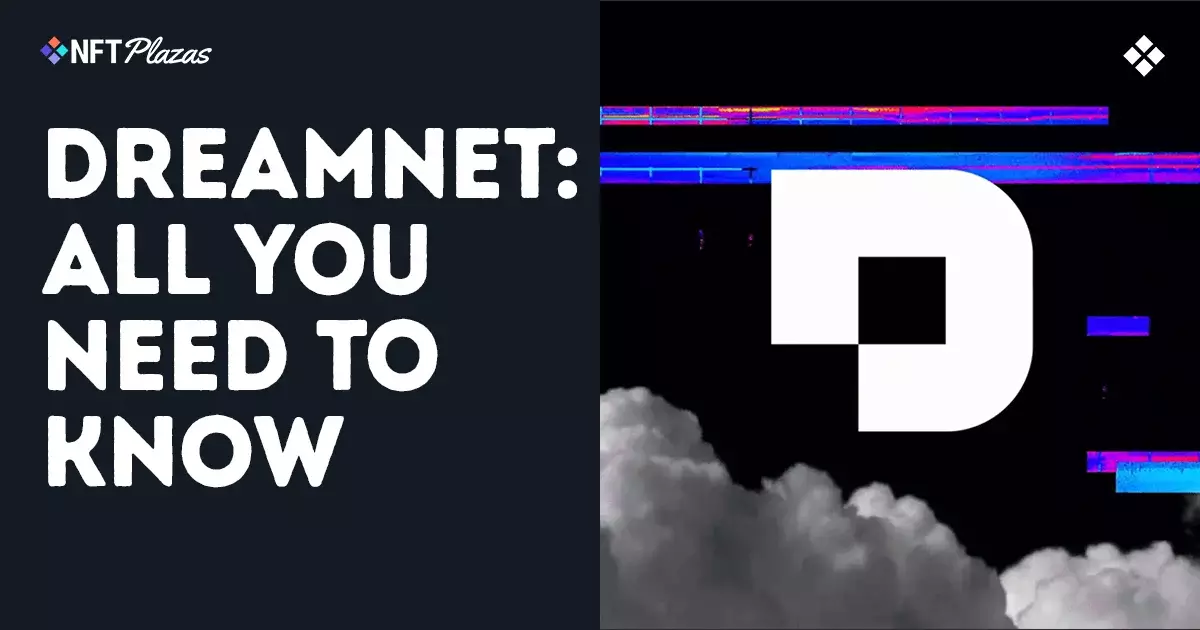In recent years, the convergence of blockchain technology, non-fungible tokens (NFTs), and artificial intelligence (AI) has created a fertile ground for disruptive innovations in digital entertainment. Among these, DreamNet emerges as a daring venture that promises to redefine how narratives, worlds, and characters are conceived and developed. Standing at the intersection of creative democratization and technological advancement, DreamNet boldly aims to empower human contributors while harnessing AI’s potential — a move that, if successful, could fundamentally alter the entertainment industry’s landscape. Yet, such ambitious projects often conceal underlying risks, and the path toward meaningful adoption is riddled with uncertainties. This article critically examines DreamNet’s core features, strategic positioning, and the transformative implications it heralds, all while questioning whether this initiative can truly deliver on its lofty promises.
Reimagining Creativity: The Core Philosophy of DreamNet
At its essence, DreamNet aspires to serve as a decentralized storytelling protocol that directly rewards human contribution—be it the creation of characters, lore, or locations—while leveraging AI to enhance and expand these ideas. This concept neatly combines the best of blockchain transparency with AI-driven content generation, positioning itself as a potential catalyst for a new era of collaborative storytelling. However, merely integrating these elements does not guarantee success; the real challenge lies in achieving a sustainable model that incentivizes genuine creativity over superficial engagement and ensuring that AI augmentation genuinely adds value rather than diluting storytelling depth.
What makes DreamNet particularly intriguing is its commitment to community ownership. The platform’s reliance on blockchain — specifically, the Base network and the $DOOD token, initially launched on Solana — is designed to decentralize decision-making and reward distribution. This decentralization could theoretically empower users to shape narratives and worlds without being dictated by hierarchical studios or corporations. Yet, decentralization often breeds complexity and fragmented participation, which raises concerns about governance effectiveness, content moderation, and sustained engagement over time. The question remains: can a community-driven platform maintain quality and coherence amidst the chaos of crowdsourced creation?
Strategic Ambitions and Ledger of Contribution
DreamNet features a sophisticated infrastructure centered around the WorldState — a dynamic ledger that records contributions, evaluates audience reception, and manages rewards. This game-changing mechanism aims to ensure that the most valued contributions are recognized and compensated fairly, thereby fostering a participatory ecosystem. The integration of audience feedback into the reward system attempts to address one of the persistent issues in creative industries: aligning creator incentives with audience preferences.
However, this approach also opens a Pandora’s box of potential pitfalls. User ratings can be manipulated, popularity can overshadow quality, and the risk of echo chambers forming is high. Moreover, the reliance on audience reception for reward distribution might disproportionately favor sensational or superficial content, marginalizing more nuanced or experimental ideas. While the ledger offers transparency, it remains only as good as the collective judgment it captures. An overly simplistic or biased evaluation process can undermine the platform’s integrity, ultimately dissuading serious creators from participating or leading to a homogenization of narratives.
Economic Layer and Incentive Structures
The integration of $DOOD as the primary currency in DreamNet underscores a core strategy to create a thriving economy centered around user contributions. Originally associated with Solana-based NFTs, $DOOD will also be bridged to the Base network, allowing broader interactions and utility within DreamNet’s ecosystem. Contributors can earn tokens by submitting engaging ideas, which can then be staked, used to generate AI content, or traded for other tokens like Universe, Agent, and Place.
While this layered economic model is innovative, it raises questions about its sustainability. Will the demand for $DOOD remain stable, or will speculative behavior dominate, leading to volatility and disillusionment? Is there a risk that the platform becomes overly transactional—where participation is motivated primarily by short-term gains rather than a genuine passion for storytelling? If these issues are not addressed, DreamNet risks internal economic distortions that could undermine its long-term credibility.
Furthermore, exclusive access given to Doodles NFT holders introduces a layer of privilege that contradicts the ideal of democratized storytelling. While incentivizing existing NFT holders is a pragmatic move, it risks creating an elitist environment, limiting broader community engagement in its early stages. A truly revolutionary platform should aspire to universal participation, not just serve a select few.
The Future of Narrative Creation and Industry Disruption
DreamNet’s strategic ambition to expand beyond Doodles into other popular worlds suggests a vision of a broader metaverse of interconnected narratives—an ecosystem where creators, fans, and developers collaboratively shape immersive experiences. If successful, this could offer an unprecedented level of creative democratization, challenging the top-down control traditionally exercised by entertainment conglomerates.
However, technological and practical challenges loom large. How will AI-generated content maintain narrative coherence and emotional resonance? Can the community effectively police quality without gatekeeping mechanisms that risk censorship? These are unanswered questions that could determine DreamNet’s fate. Its success hinges on balancing decentralized governance with quality control, fostering genuine human creativity while leveraging AI’s efficiencies.
Lastly, the potential influence of DreamNet extends beyond its immediate scope. It might set a precedent, encouraging other NFT projects and entertainment entities to adopt decentralized creative platforms. Yet, this also invites skepticism: will the industry rush to adopt such models without critically evaluating their long-term viability or ethical implications? The risk exists that hype could outpace substance, leaving audiences disappointed when the promised revolutionary experience fails to materialize.
While DreamNet’s bold approach to intertwining blockchain, AI, and community oversight offers an inspiring blueprint for the future, its ultimate success will depend on execution, moderation, and the ability to navigate inherent complexities. Decentralized, creator-centric narratives are an enticing prospect—yet, critical scrutiny remains essential to ensure that the platform’s lofty ideals translate into meaningful, sustainable innovation, rather than merely a fleeting technological trend.

